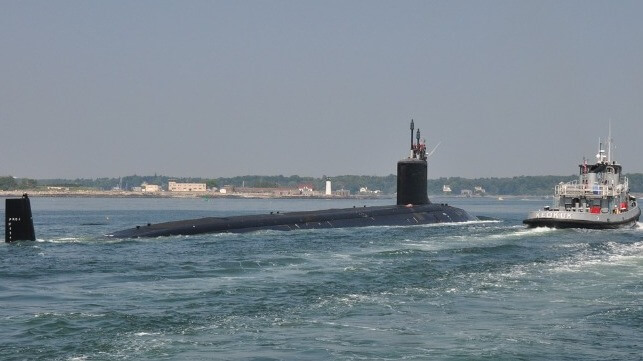Report: AUKUS Nuclear Sub Program's Cost Could Balloon to $120B

Australia's plans to build nuclear-powered submarines using technology provided by the U.S. could cost a staggering $122 billion to implement, according to an analysis by a top think tank.
In a new report, the Australian Strategic Policy Institute (ASPI) determined that the most economic approach for implementing the Australia–UK–US submarine partnership (AUKUS) that was signed in September would cost about $83-92 billion. This "economic-build" option assumes that the subs would be built in Adelaide and that they would be constructed in parallel on a rapid delivery timeline.
If the subs are built sequentially using a "continuous-build" approach, with one delivery every three to four years, construction would take longer and the total delivered cost would be higher - between $109-122 billion, including the effects of inflation.
“This new enterprise will be a massive undertaking and probably the largest and most complex endeavor Australia has embarked upon. The challenges, costs and risks will be enormous. It’s likely to be at least two decades and tens of billions of dollars in sunk costs before Australia has a useful nuclear-powered military capability,” states the report.
The cost drivers include both the U.S. and UK moving to bigger submarine designs; choice of build strategy; and the broader support system and infrastructure needed to operate nuclear submarines. The authors added that once those cost drivers are fully understood, it is entirely possible that the estimates could grow significantly, putting a heavy burden on taxpayers.
In September, the Australian government announced that it would acquire a nuclear-powered submarine (SSN) capability with support from the UK and the U.S. With little notice, it abandoned a previous diesel-electric sub deal with France; this preexisting arrangement was already facing the possibility of cancellation because of concerns over schedule and capability. Its acquisition cost would have been in the range of $40 billion in constant dollars, though cost growth was a growing concern.
Under AUKUS, the Australian government has indicated plans to acquire at least eight nuclear-powered submarines with a size range of between 7,000 tonnes and 10,000 tonnes.
According to ASPI, the decision by Australia to invest in the lethal, high capability subs was largely informed by the shifting military balance in the Indo-Pacific region, where China is using “military power and intimidation to achieve its ends."
“The Australian government has assessed that the risks and uncertainties associated with China’s continued aggression towards and coercion of its neighbors warrant taking the significant political and economic risks associated with this decision,” stated the report.
Australia sees nuclear-powered submarines as a significant deterrent given their clear superiority over conventional submarines, particularly their speed, endurance and ability to generate time on station.

that matters most
Get the latest maritime news delivered to your inbox daily.
As an example, the report noted that it takes a diesel submarine 20 days to reach the South China Sea from a base at HMAS Stirling in Western Australia, then another 20 days to return - leaving just 11 days on patrol. During that time, the submarine would need to break the surface multiple times to recharge its batteries, exposing it to detection from ships, submarines, aircraft and satellites due to its increased radar, noise and heat signatures.
In comparison, a faster nuclear submarine would take around seven days to reach the area of operations and require another seven days to return, allowing 75 days on patrol with its greater endurance. That would represent 600 percent more time on station for a single mission, and at no time would the submarine need to break the surface.
